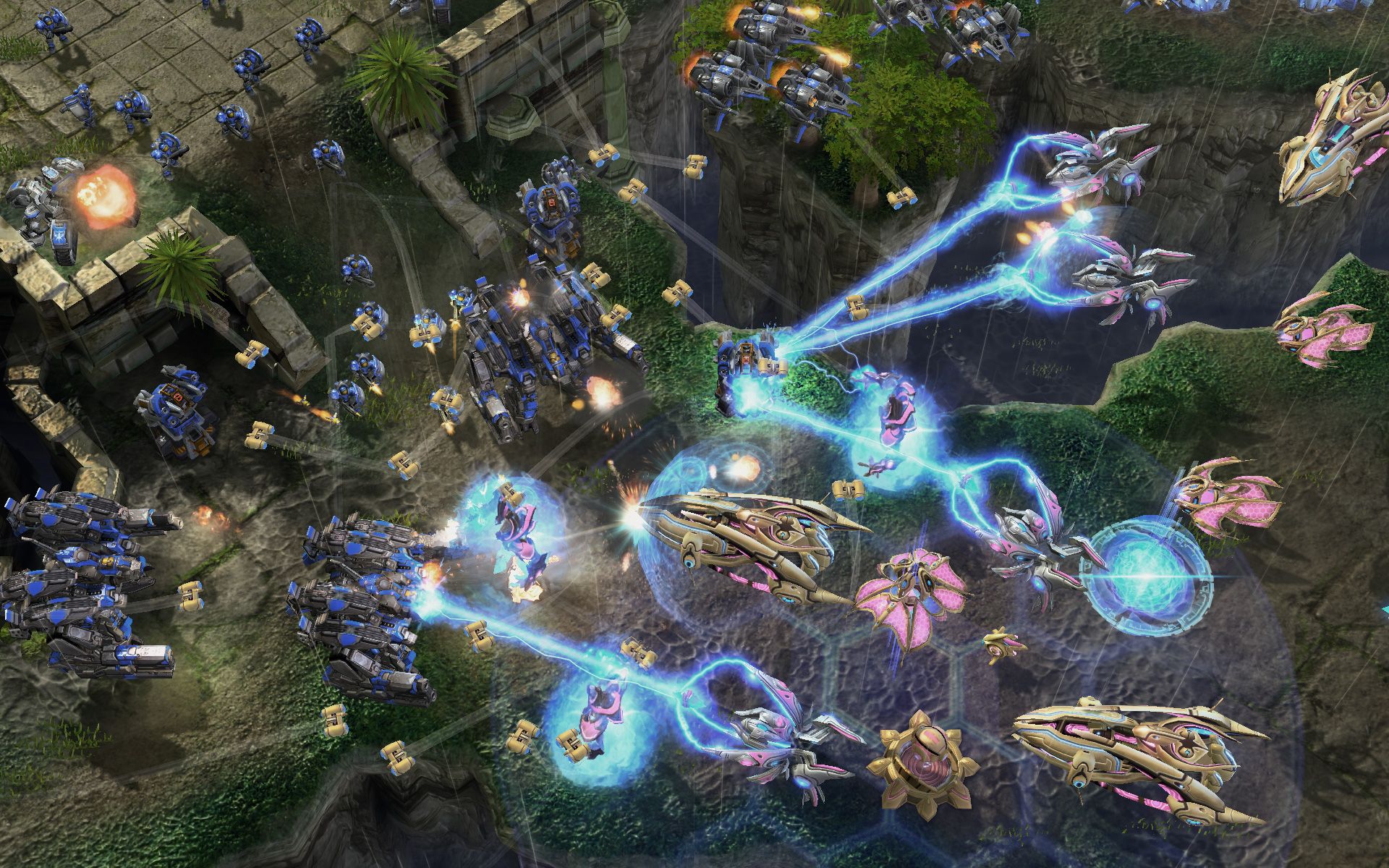
So you’ve got $100 riding on the latest Starcraft match and you turn to your friend complaining “his macro makes no sense! He thinks he’s winning but they’ll have a way stronger economy in just 30 seconds!” most likely your friend will just look at you quizzically.
If your friend isn’t in the competitive esports scene but is a gamer, he’ll probably think you’re just using the term macro weirdly. In MMORPGs and similar games, “macros” refer to binded keysets that allow you to execute a combination of commands all at once with a single keystroke. In real-time strategy games with an “economy” like Starcraft, “macro” means something completely different. If you or a loved one needs a primer on the basic Starcraft terminology, then look no further.
APM
This is the skill that separates the men and women from wannabees. APM stands for
Actions Per Minute. This refers to how fast a player can perform the actions they must execute during the match, and can really hurt your gameplay if your opponent is performing actions much faster than you. Some hardened pros will even exploit their opponent’s weak APM by changing their play style to cause the opponent to have to execute more actions, thus making their low APM their biggest weakness.
Micro
Micro, as the term implies, refers to a player looking at the game at a small, microscopic level. The smallest level you can get to is a single resource gatherer who can build things or a single army unit who can attack things or scout. Amazing professional players with their hummingbird-like APM can win even the most one-sided of battles against less-seasoned players by exploiting the weak micro of players controlling and otherwise-unstoppable army. Knowing which units to send against which is essential to maximizing your micro skills. Marines are an unstoppable force until they hit a patch of banelings or a horde or roaches. An armada of void rays will quickly be made into swiss cheese with just a small clump of hydras. Splitting your army to make sure the proper units are attacking their squishy enemy and not just the nearest possible enemy is what make makes micro matter.
Macro
Very different from “macros” as previously explained, macro refers to your economy (the entirety of your units, resources, and buildings)—the opposite of your micro. Whereas micro refers to your unit-specific control of army units engaging in positioning and battle, Macro refers to your economy as a whole. Think microscopic compared to macroscopic. The bird’s-eye view of how you’re doing, whether you’re supply blocked, whether you’re expanding, whether you’re upgrading—all of these things contribute to your macro. Your APM
heavily affects your macro as well as your micro. A good professional player will be able to seamlessly transition between micro-ing their army and boosting their macro. Because you still have to switch between your buildings and bases, every millisecond spent considering the grander-scale economy is a millisecond you aren’t attacking with your units most effectively, and that makes you vulnerable to attack. But without a solid macro and thriving economy, you’ll have no resources or strengthened units to win the fight!
Understanding the balance between macro and micro is the key to understanding what makes Starcraft such a global phenomenon. It’s three-dimensional war chess, and we’re just all praying it doesn’t end up an Ender’s Game scenario.
Supply block
A bonus term you might want to know to make sense of casted professional Starcraft games: “supply blocked” refers to when a player cannot make more units until they raise their unit capacity or make more food. The whole match depends heavily on building units, so if your build order or unit production is messed up or halted, it can affect your whole plan, and leave you caught with your pants down. With Terran this is their supply depots, which can be raised or lowered as a wall or choke point. Zerg utilizes their overlords, which have to be hatched at the base and are partially an army unit themselves (lacking any attacks themselves but able to float across the map granting vision). Protoss increases supply cap with a pylon placement, a structure similar to Terran, however pylons are also used to warp in army units after an upgrade to the gateway.
Just like adding money to a professional gaming match adds a new dimension of excitement, so too does being able to understand what the heck is going on when a caster is screaming “Oh, no, he needs more overlords!!!”

